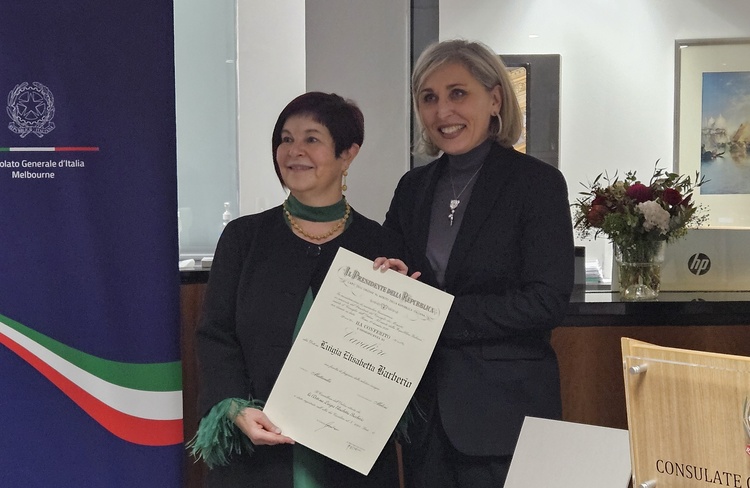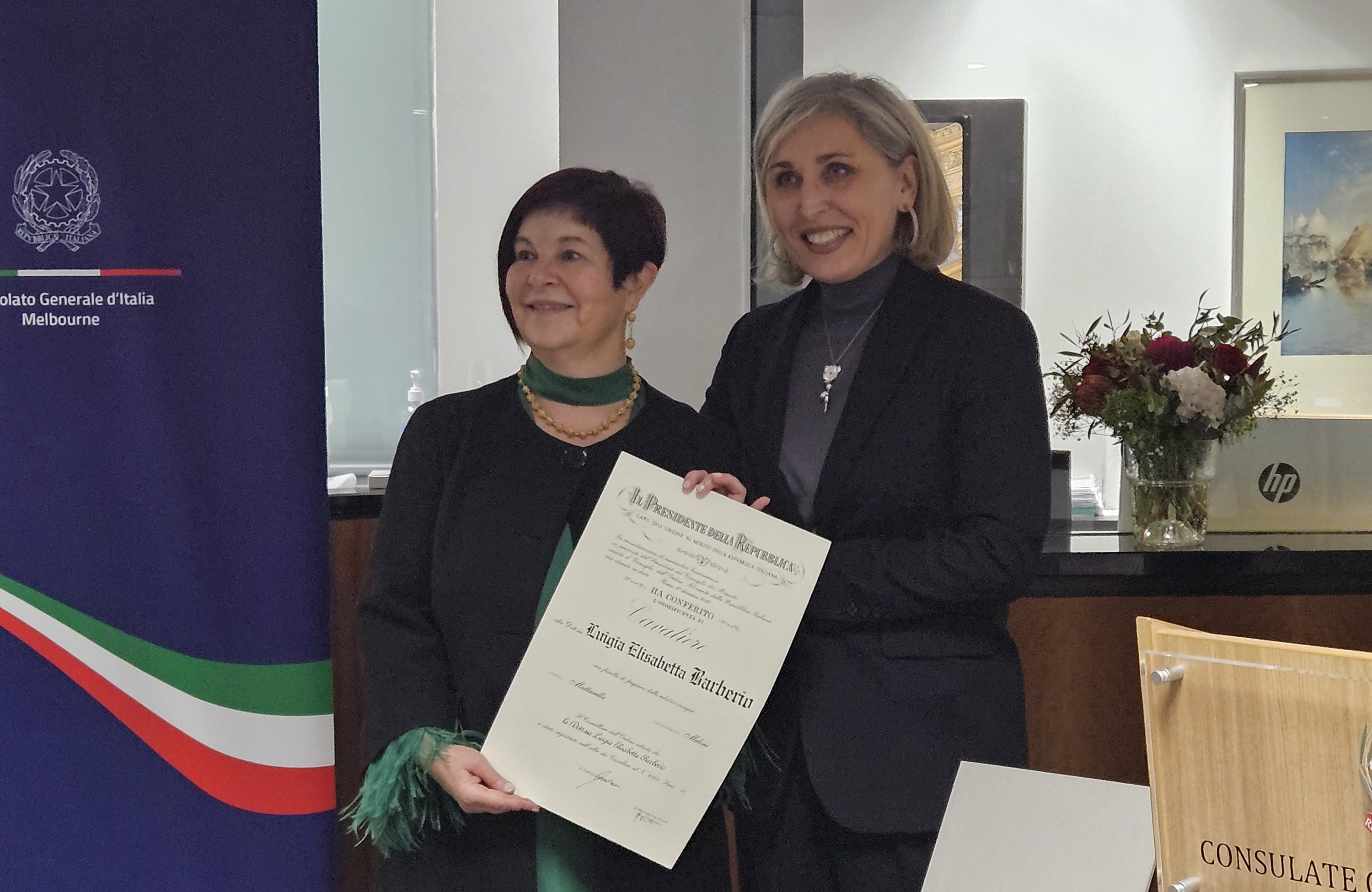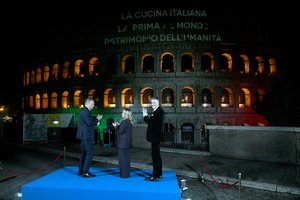The recognition is Italy’s highest-ranking honour and was presented by the Italian Consul General Hanna Pappalardo at the Italian Consulate in Melbourne.
Barberio was moved by receiving the honour, “I am delighted and deeply honoured to have received this recognition from Italy for my research in particle physics, this means a lot to me,” she said.
“I am also proud to say that Italy is a superpower in this significant field.”
Professor Barberio is the Director of the ARC Centre of Excellence in Dark Matter Particle Physics, and her achievements are numerous. They include seminal research that facilitated two Nobel Prizes in physics research. The first in 2008 for Kobayashi and Masukawa, and the second in 2013 for Englebert and Higgs.
With so many achievements to her name, along with her impressive skills and experience, Barberio moved to Australia to work at The University of Melbourne several years ago, where she has continued to make her mark. Her wealth of experience has led to initiating Australia’s dark matter direct detection program. This program started in 2014 and has been in steady development since.
Barberio previously worked at CERN in an underground laboratory in the Alps. There she was part of the team undertaking an analysis in the OPAL experiment at Large Electron Positron Collider. Precision measurements made at this collider led to the discovery of the Higgs boson particle, the particle that Stephen Hawking dubbed the ‘God’ particle. The measurements that were performed provided a breakthrough moment in providing a more accurate understanding of particle behaviour, advancing the study of dark matter.
Whilst at CERN, Barberio also collaborated with the DAMA/LIBRA laboratory deep underground beneath the Gran Sasso, Abruzzo.
This collaboration has been further developed as part of her work in Australia through a pivotal common research initiative which sees an exchange of data and expertise. Barberio and her team, as well as Italian scientists, are often found pouring over intricate data exploring all things dark matter, often moving between the hi-tech laboratories located in both countries.
Barberio’s work has led to the construction of the first underground physics laboratory in the southern hemisphere, the Stawell Underground Physics Laboratory (SUPL) which is situated in an underground mine in the small Victorian town. This specifically-constructed laboratory has been set up to provide insights into dark matter, and dark matter behaviour in the southern hemisphere. The quest is to discover whether the behaviour of dark matter may be different in the southern hemisphere compared to the northern hemisphere.
However, at the Consulate, on the evening of the Award ceremony, away from the technology, the formulas and the darkness of the SUPL, Barberio was joined by her very proud colleagues and members of the Italian community to celebrate.
Amongst the guests were The University of Melbourne’s Professor Mark Cassidy, Chair of Languages Professor John Hajek and Barberio’s other colleagues. Also, representing COASIT, were Marco Fedi and Elaine Bocchini along with Francesco Pascalis of Comites and Tony Tardio of Rete Italia.
Dean of the Faculty of Science, Professor Moira O’Bryan stated, “I am absolutely delighted that Elisabetta has been recognised for her excellence and leadership in physics by the Italian government.”
“The contributions she is making to her field of particle physics and science more broadly are outstanding. It is an absolute pleasure to work with Elisabetta and to see the positive impact she is making.”
The awarding of the medal provided a moving moment between two esteemed women from the same city in Italy. Consul General Hanna Pappalardo and Professor Barberio were both born in Cosenza in Calabria.
In her acceptance speech, Barberio explained that, in fact, it was her background that accounted for her “resilient approach to life”. Curious and always able to find a solution to a problem, she learnt to never say never, “I always pursued my dreams.” She attributes these qualities to being born in a region where hard work and purposefulness was the only way to move ahead.
Barberio is very proud of her origins. Growing up in San Giovanni in Fiore, a small town in the beautiful mountains of La Sila, provided her with an appreciation of the environment and an inquisitive nature.
Elisabetta was only nine, her brother just five, when their father passed. Despite the challenges, Elisabetta’s mother was determined to ensure that Elisabetta and her brother were provided with all the necessary opportunities in life.
Nature or nurture, Barberio had both to draw on as influences which set her on a path towards particle physics.
Her father had been a medical doctor, who specialised in paediatrics and oversaw the school health program in the area. Her mother taught maths and physics at a local school. This provided the young Elisabetta with access to an array of books and stimulating dinner table conversations which fostered her inquisitive nature.
Teachers and those around her noticed that the young Elisabetta had a particular way of interpreting and solving formulas and problems. This ability to critically analyse problems from different perspectives has proven advantageous.
Her challenge now is to unravel the mystery of the existence of dark matter.
Dark matter is thought to make up 85 per cent of all matter. The key questions are: what exactly is dark matter and how does it impact the way we interact with the world? How does it interact with gravity? Barberio, with her capable team, are on a quest to answer both.
Unsurprisingly, there was no time for rest after the celebrations. The morning after the award ceremony, the newly appointed Cavaliere Barberio was back in the office preparing for her meeting in Abruzzo with colleghi italiani. No rest for inspiring women!












